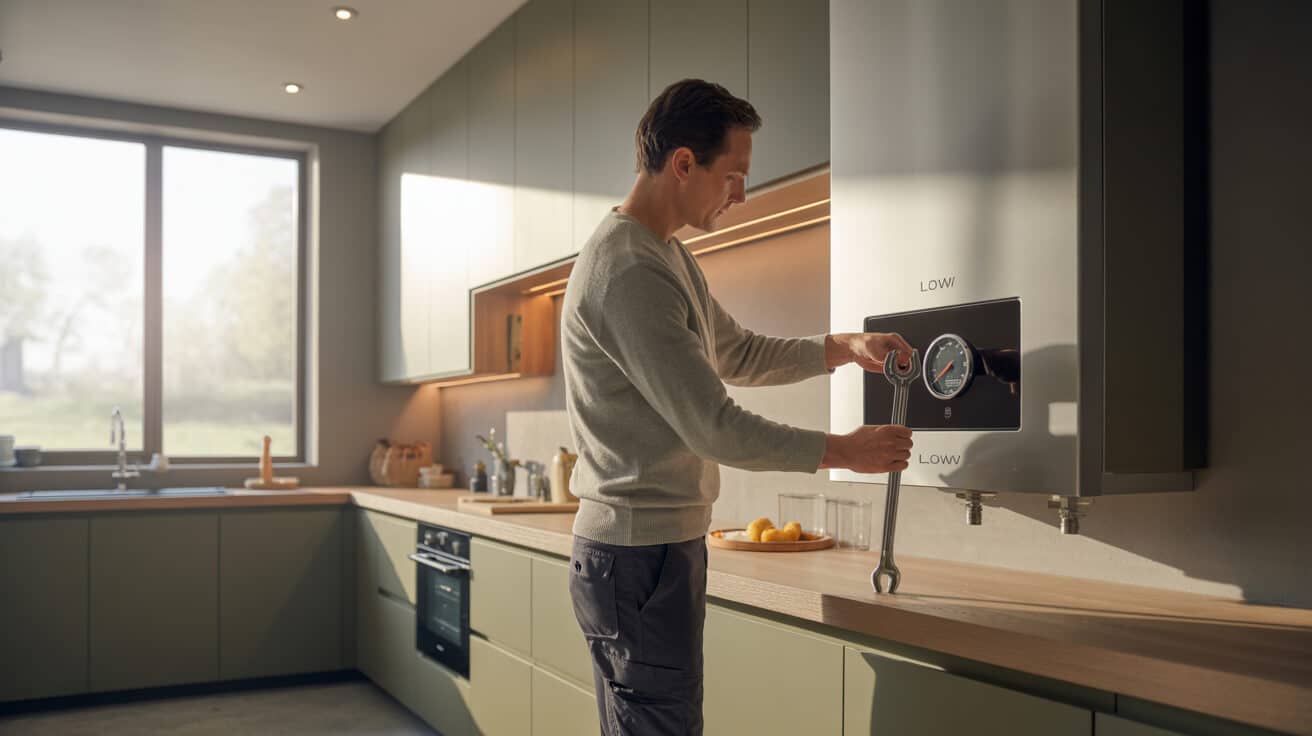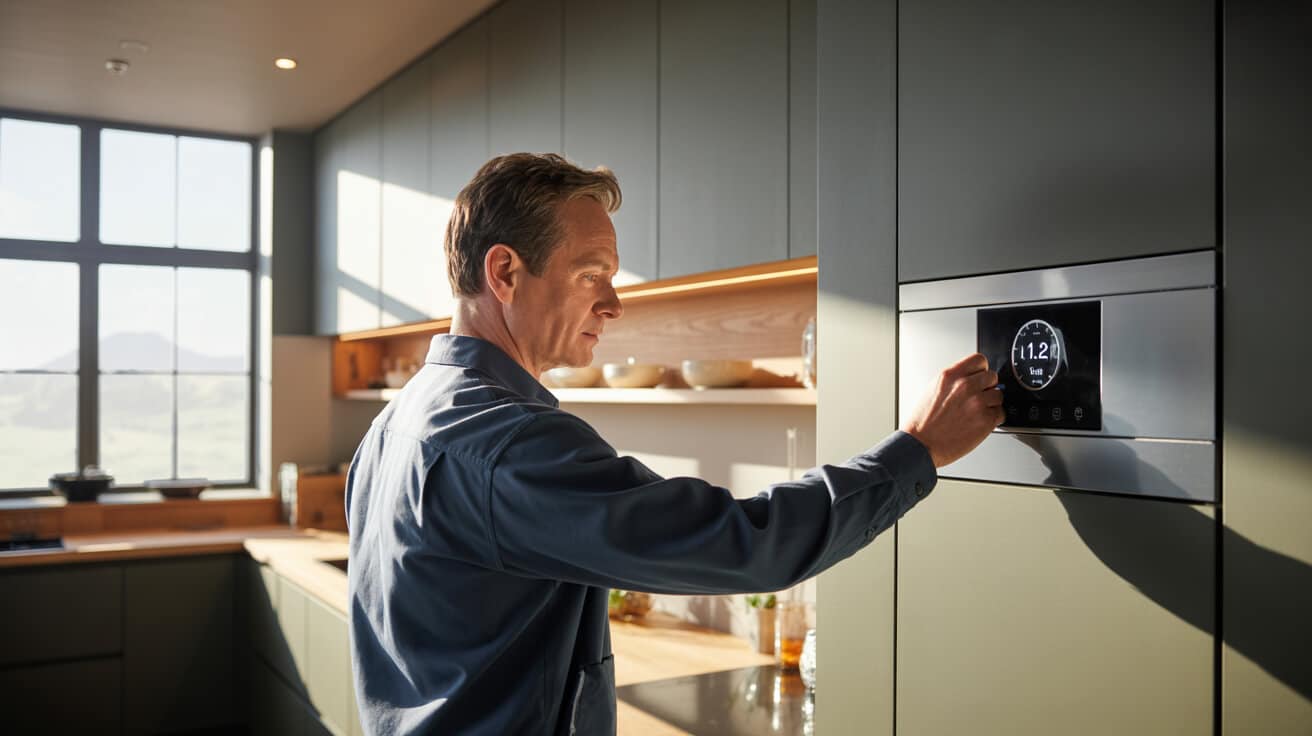Low boiler pressure repair consists of restoring and stabilising pressure levels in closed-circuit heating systems following detection of insufficient gauge readings, system lockouts, or temperature anomalies. Modern pressurised systems rely on predicted pressure bands for reliable thermal output, water safety, and legal operational standards. The repair process employs both hands-on methods, such as refilling via a filling loop, and more sophisticated diagnostics for identifying and resolving underlying leaks or component failures.
Pressure maintenance is pivotal in extending asset life, sustaining comfort, and meeting compliance in environments ranging from single-family dwellings to multi-unit commercial facilities. User error, unnoticed gradual drops, or acute failures—such as valve ruptures—spark demand for professional intervention and compliance-assured record keeping, which is standard among leading providers such as Plumbers 4U.
Technical language origins
Terminology evolution
- Boiler: Evolved from the term for early heat appliances designed to boil water, now it refers to a closed vessel wherein water is heated by combustion or electric means for space heating and, often, hot water delivery.
- Pressurisation: Refers to the controlled increase and maintenance of water circuit pressure, facilitating even heat distribution and preventing air ingress. Originally a manual practice, it is now regulated by pressure sensors and hydraulic feedback loops.
- Filling loop: The removable or fixed pipework assembly enabling direct water supply from the mains into the system, controlled by isolation valves—an innovation designed to allow safe refilling without exposing potable supplies to contamination.
- Expansion vessel: A sealed diaphragm tank absorbing expansion as system water is heated. First appearing in industrial design, it became standard in domestic and commercial installations with the move away from gravity-fed systems.
- Pressure relief valve (PRV): Calibrated mechanical device releasing water if operating pressure exceeds safe bounds; a legacy of early safety valves on steam equipment, now essential in every sealed heating circuit.
Heating system architecture and pressure dynamics
Mechanisms in sealed systems
Sealed (pressurised) heating circuits are standard in modern UK properties. These systems use an expansion vessel and a closed pipework network to keep water at a stable pressure, usually around 1.0–1.5 bar when cold. System health depends on the interaction of several components:
- Expansion vessel: Maintains pressure equilibrium.
- Filling loop: Provides the means for operator-controlled recharge.
- Pressure gauge (analogue or digital): Offers an immediate, readable indication of system pressure.
- Pressure relief valve (PRV): Acts as a final failsafe, discharging water if the system approaches unsafe pressure.
- Automatic air vent: Continuously purges air, maintaining hydraulic efficiency.
Stakeholder experience and scenario mapping
Homeowners may detect diminishing heat output, error messages, or enigmatic noise, sparking uncertainty about safe action steps. Tenants often escalate when heating failures cause discomfort or are flagged by smart monitoring systems. Landlords face legal exposure if non-compliance leads to tenant hardship or audit failure. Facilities managers balance urgent repair with compliance, schedule maintenance, and asset documentation across multiple buildings. Service providers like Plumbers 4U operate at the intersection of diagnosis, intervention, legal duty, and customer trust.
Development and regulation in pressure control
Origins and advancement
Early hydronic heating operated open to atmospheric pressure, using header tanks elevated above property pipework. This solved basic supply but invited cold bridging, corrosion, and system inefficiency. The transition to sealed systems, marked by the widespread adoption of the expansion vessel in the late 20th century, enabled higher system pressure, improved modulation, and safety redundancy.
Industrial and regulatory milestones
- Building Regulations Part L: (UK): Mandate energy-efficient design and operation, including controls for sealed systems.
- Gas Safe Register: Mandatory certification for all engineers handling boiler repairs, guaranteeing system safety and customer assurance.
- WRAS: Stipulates that all fittings in water systems are approved for safety and contamination prevention.
Technological innovation
Fault diagnosis evolved alongside pressure management. Analogue gauges gave way to digital LCD panels. Modern pressure-sensitive switchgear, electronic documentation (e.g., Benchmark, CP12 gas safety checks), and direct message fault codes allow users, asset managers, and engineers to communicate system state more transparently with service providers.

System components and key mechanisms
Architecture and operational elements
A contemporary heating system comprises:
| Component | Description | Potential Failure / Indication | Inspection & Maintenance | |———————|——————————————————————|—————————-|————————————| | Expansion vessel | Membrane tank buffering pressure | PRV leakage, hollow sound | Schrader valve test, pressure read | | Filling loop | Pipe for controlled refilling | Continual drip, faulty valve| Visual/tactile inspection | | Pressure gauge | Mechanical or electronic pressure indicator | Flicker, freeze, misreading | Calibration, replacement | | PRV | Opens above set point (~3bar) for safety | Drip at discharge pipe | Clean, check spring | | Pressure sensor | Feeds real-time data to boiler controller | Lockout codes, no readout | Digital interface test | | Air vent | Expels excess air to prevent airlocks | Drip or persistent air | Dry-wipe check, replacement |
Component failures propagate system-wide effects: a depleted expansion vessel can mimic a leak, a stuck PRV may drain the system gradually, and an analogue gauge, if faulty, masks tangible pressure loss.
Role of pressure regulation in property management
Risk, responsibility, and legal compliance
Consistent system pressure is a minimum operating requirement for practically all modern boilers. Legal and best practice benchmarks, such as Benchmark documentation, require ongoing monitoring and have shifted customer behaviour to proactive (scheduled) instead of reactive (emergency) repair cycles. Poor pressure management can result in:
- Boiler lockout, yielding total loss of heat and hot water.
- Voided manufacturer warranties.
- Insurance refusals for water and system damage.
- Legal exposure, particularly for landlords failing to evidence qualified, periodic inspection.
Compliance assurance for asset managers
Companies such as Plumbers 4U assure system health by automating service intervals, blending digital service logs with actionable recommendations, and supporting documentation for audits, asset value realisation, and tenant relations.
Repair interventions and service protocols
repair steps
- Gauge observation: Confirm static/cold system pressure is below expected values (usually <1.0 bar cold).
- Local inspection: Scan pipework, radiator valves, boiler case (externally if user, internally if engineer) for evidence of leaks.
- Filling loop operation: Locate, attach, and gradually open filling loop valves while watching pressure rise. Target set: 1.0–1.5 bar.
- System hold test: Isolate filling loop. Monitor gauge for at least 6 hours. Any measurable drop indicates a latent leak or expansion vessel issue.
- Expansion vessel check: Isolate system, depress Schrader valve; water ejection indicates diaphragm rupture, requiring replacement. If air only, test pre-charge pressure; refill to manufacturer standard.
- PRV and sensor test: Empty some system water, then refill to observe PRV action and sensor responsiveness.
- Digital code reading: For modern boilers, use display interface or external diagnostic tool (Plumbers 4U engineers carry proprietary devices) to read and interpret fault codes.
Persona-centric processes
- Homeowners and tenants are guided through safe top-up and simple leak checks.
- Landlords must document every intervention, keeping tenants in the loop for transparency.
- Facilities managers employ scheduled inspection routines, digital pressure monitoring, and asset logs, outsourcing advanced diagnostics to certified service providers.
- Plumbers 4U provides a blend of in-person intervention and instructional support to guide non-expert responsibilities while securing long-term system health.
Diversity of pressure loss events
Acute versus chronic loss
- Acute: Major system element failure (e.g., PRV rupture, cracked radiator) triggers immediate, large-volume pressure drop.
- Chronic: Micro-leaks, failing vessel diaphragms, or persistent air ingress induce a slow, less-obvious decline over weeks or months.
- Episodic: Loss after recent maintenance may follow improper filling loop closure, delayed air bleed evacuation, or residual airlocks.
| Event Type | Signs | Immediate Risk | Resolution Path |
|---|---|---|---|
| Acute | Rapid pressure drop, water visible | Immediate loss of heat; water damage | Emergency engineer call |
| Chronic | Gradual drop, no visible leaks | Energy waste, long-term damage | Scheduled diagnostics |
| Episodic | Drop post-service/bleed | Intermittent heat, comfort loss | User/engineer confirmation |

Toolkits and technical pathways
Repairs and diagnostics toolkit
- Filling loop adapter: Core for manual top-up.
- Analogue/digital pressure gauge: For static and dynamic pressure checks.
- Tyre pump/digital compressor: For recharging expansion vessels; essential for multi-storey systems.
- Leak detection spray: For identifying micro-leaks in pipework and radiators.
- Thermal imaging camera (engineers): Rapid detection of hidden or underfloor leaks.
- Manometer: For accurate, high-precision pressure diagnosis.
- Radiator bleed key: For removing trapped air—a frequent maintenance trigger for pressure loss.
- Service tablets and compliance documentation tools (Plumbers 4U): For on-site logging, repair histories, and certified compliance record-keeping.
Deployment model by persona
- Homeowners and tenants: Safe operation of filling loop, basic visual checks, and gauge reading.
- Landlords: Must schedule engineer checks, document intervention, maintain CP12 (rental property compliance) records.
- Facilities/asset managers: Oversee broader toolkits, schedule group asset reviews, and ensure documentation harmonisation across units and service teams.
Key participants in service and compliance
Roles and expectation mapping
- Homeowner/tenant: Early warning, compliant basic checks, escalation triggers.
- Landlord: Legal responsibility for boiler safety, compliance records, and repair funding.
- Facilities manager: Multi-building oversight, central documentation, regulatory risk management.
- Service engineer/Plumbers 4U: Diagnosis, repair, certification, and compliance assurance, always operating within Gas Safe and WRAS frameworks.
Table: Persona—Obligation—Pain Point—Resolution Interface
| Persona | Obligation | Primary Pain Point | Resolution Path |
|---|---|---|---|
| Homeowner | Self-check & maintenance | System lockout/confusion | User guide, engineer |
| Tenant | Report, basic check, inform | No heat, poor comms | Tenant support, landlord |
| Landlord | Legal compliance, funding | Compliance failures, cost | Audit trail, asset log |
| FM | Inspection, log, scheduling | System downtime | Digital log, service |
| Plumbers 4U | Total diagnostic, compliance | Technical challenge | End-to-end resolution |
Governance and documentation
Legal, regulatory, and certification standards
- Gas Safe Register: UK-wide certification legitimising any gas appliance repairs, including sealed system interventions.
- WRAS Compliance: All fittings in potable water circuits, including filling loops, must be WRAS-approved.
- Part L of building regulations: Mandates energy-efficient, safely maintained systems.
- Benchmark logbook: Central documentation for all major boiler services, used to validate warranties and facilitate property sales/transfers.
- CP12 Gas Safety Certificate: Yearly landlord/let property requirement, covers operative boiler and pressure checks.
Documentation is treated as an asset in its own right: Plumbers 4U retains secure digital copies to enable rapid compliance confirmation or audit response, and issues customer-facing copies at the point of service.
Tracking and evaluating system health
SI-based values and operational monitoring
- Cold system target: 1.0–1.5 bar (100–150 kPa).
- Hot operational maximum: ≤2.0 bar, up to manufacturer’s design threshold.
- Weekly pressure loss: Should not exceed 0.1 bar in maintained systems.
- Error code management: Ongoing, systematic logging, enables trend identification and proactive asset management.
Routine and enhanced maintenance cycles
- Landlords and managers: Quarterly minimums, directed by asset scale or property risk profile.
- Homeowners: Annual or semi-annual reviews; user logbooks encourage in-situ observation and troubleshooting escalation.
Table: System Status—Acceptable Range—Action Required
| Status | Pressure Range (bar) | Action |
|---|---|---|
| Normal | 1.0–1.5 | Routine |
| Falling Slowly | 0.8–1.0 | Monitor |
| Acute Drop | ≤0.7 | Engineer |
| Overpressure | >2.0 | Immediate |
Obstacles to consistent pressure management
Technical, economic, and socio-legal barriers
- Technical: Concealed faults, obsolete hardware, shared lines confound diagnosis and pace repair.
- Economic: Pressure system maintenance is less prioritised in cost-driven management, delaying intervention.
- Legal/operational: Disputes over repair funding, responsibility for failures in communal or let housing, or loss of compliance certification.
Emotional drivers—tenant frustration, owner anxiety, managerial risk-aversion—fuel timely escalation within the premise of liability and property value preservation.
Outcomes of effective troubleshooting
Benefits, risk mitigation, and aftereffects
- Longevity: Supported systems require fewer deep repairs, deliver stable comfort, and hold manufacturer warranty value.
- Risk minimisation: Documented intervention deters insurance refusal and regulatory penalty.
- Compliance: Regular, professional checking meets legal thresholds, reduces tenant complaints, and underpins asset value (especially for rental or managed commercial properties).
- Reputational boost: Asset and building managers employing trusted service providers, such as Plumbers 4U, report higher long-term satisfaction among occupants.
Future directions, cultural relevance, and design discourse
Automated pressure monitoring, predictive diagnostics, and hybrid self-service/engineer service models are under development to close the knowledge gap between occupants and technical experts. Policy discussions signal rising legal expectations for record-keeping, with digital traceability becoming standard and portable across ownership changes.
In a context of increasing sustainability requirements, pressure management becomes both a technical necessity and a symbol of responsible ownership and property stewardship. Culturally, transparency and proactive maintenance—enabled by reliable partners—are poised to reshape property care as an act of value protection, not only for compliance, but as a marker of quality living and operational excellence.

